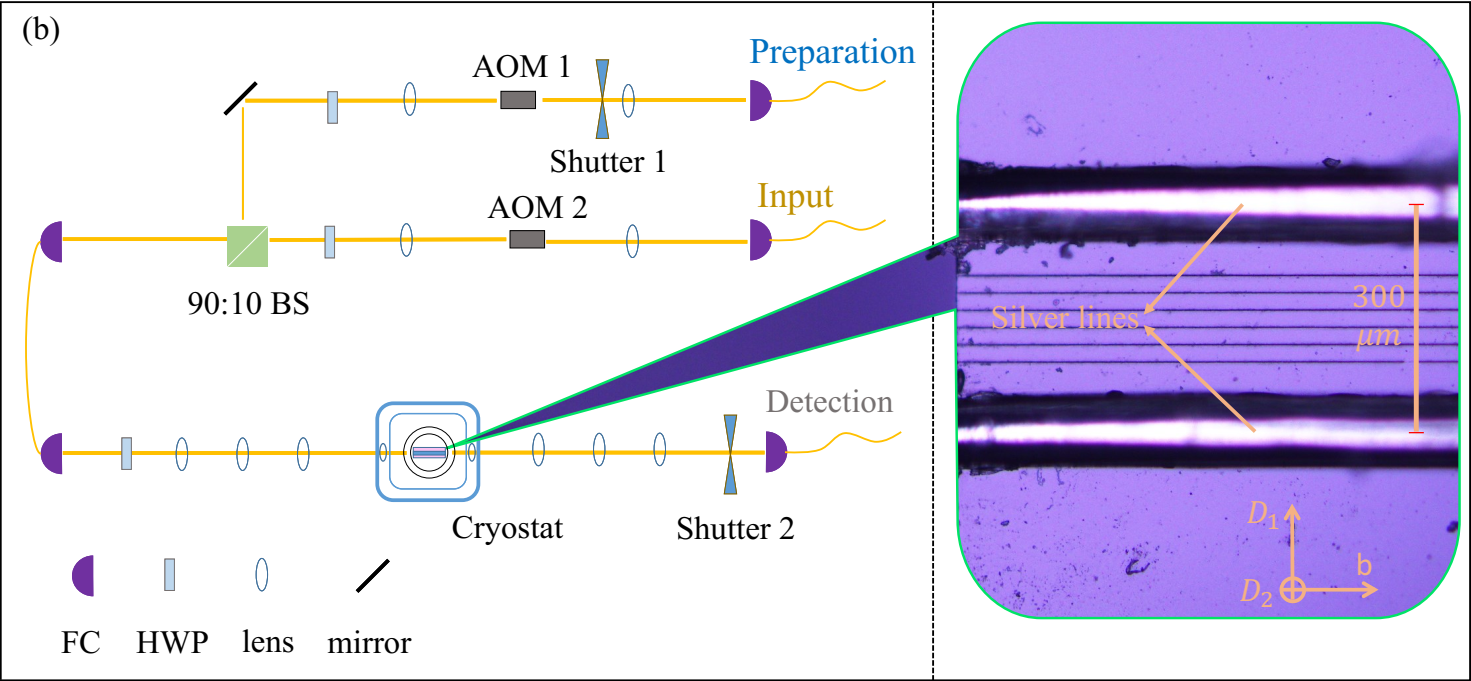Researchers Achieve On-demand Storage in Integrated Solid-state Quantum Memory
Researchers from CAS Key Laboratory of Quantum Information of the University of Science and Technology of China (USTC) of the Chinese Academy of Sciences have demonstrated on-demand storage of photonic qubits in an integrated solid-state quantum memory for the first time. This work was published in Physics Review Letters.
Quantum memory is the core device for building large-scale quantum networks. Quantum repeaters or quantum hard drives, based on quantum memories, can effectively overcome photon loss in the channel, thus extending the working distance of quantum networks.
On-demand storage requires one to determine the storage time after the photon has been absorbed by the quantum memory, which is essential for quantum networks. However, integrated solid-state quantum memories demonstrated so far are all based on the atomic frequency comb (AFC) scheme with a predetermined storage time.
In order to achieve on-demand storage, the researchers adopted a modified quantum memory scheme: the Stark-modulated AFC scheme. They made use of the Stark effect to manipulate the evolution of the rare-earth ions in real-time by introducing two electrical pulses to control the storage time of the quantum memory.
The researchers first used a femtosecond laser micromachining (FLM) system to fabricate optical waveguides on the surface of a europium-doped yttrium silicate crystal, and then placed two on-chip electrodes on both sides of the optical waveguides, so that the storage time could be controlled in real-time with a transistor-transistor logic (TTL)-compatible voltage. The insertion loss of the optical waveguide was below 1 dB, which is currently the best value reported for integrated solid-state quantum memories.

They demonstrated on-demand storage of time-bin qubits with such integrated solid-state quantum memory, with a storage fidelity of 99.3%±0.2%. This result is close to the best storage fidelity achieved with in bulk crystals (99.9%, PRL108, 190505) which was also reported by the same research group in 2012. The high fidelity indicates the reliability of this integrated quantum memory.
This work is of great importance for building large-capacity quantum memory and constructing quantum networks.
Paper link:https://journals.aps.org/prl/abstract/10.1103/PhysRevLett.125.260504
(Edited by LU Hongyu, USTC News Center)
Back
